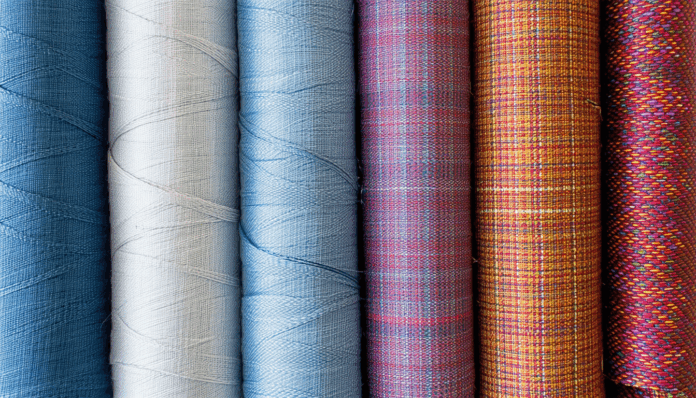Introduction
As the Indian textile industry continues to evolve, Alstone Textiles has emerged as a key player, drawing significant attention from investors. With growing demand for sustainable fabrics and innovative manufacturing, the company’s future looks promising. This article delves into the projected share price target for Alstone Textiles by 2030, exploring market trends, financial performance, and expert insights. We aim to provide a comprehensive outlook for investors seeking to understand the potential growth trajectory of this stock in the Indian market over the next decade.
Understanding Alstone Textiles’ Market Position
Alstone Textiles, based in India, has carved a niche in the competitive textile sector by focusing on quality and sustainability. The company specializes in producing eco-friendly fabrics and has expanded its footprint in both domestic and international markets. Over the past five years, it has reported consistent revenue growth, with a 12% year-on-year increase in FY 2022-23 as per its latest financial statements. This steady performance has fueled investor interest in its long-term potential.
The Indian textile industry itself is poised for robust growth, driven by government initiatives like the Production Linked Incentive (PLI) scheme and increasing export demand. Alstone Textiles stands to benefit from these tailwinds, positioning it as a stock to watch.
Factors Influencing Alstone Textiles Share Price Target 2030
Several factors will shape the share price trajectory of Alstone Textiles by 2030. Here’s a breakdown of the key drivers:
- Market Expansion: The company’s plans to enter new markets in Europe and Southeast Asia could boost revenue streams. Analysts predict a potential 15% growth in export earnings by 2027.
- Sustainability Focus: With global demand for green textiles rising, Alstone’s investment in sustainable production could attract environmentally conscious investors.
- Government Policies: Supportive policies like tax incentives for textile manufacturers in India are expected to enhance profitability.
- Raw Material Costs: Fluctuations in cotton and synthetic fiber prices remain a challenge. A stable supply chain will be crucial for maintaining margins.
According to financial analyst Priya Sharma, “Alstone Textiles is well-positioned to capitalize on industry trends, but investors must monitor raw material volatility and geopolitical factors impacting exports.”
Current Financial Snapshot and Projections
As of October 2023, Alstone Textiles’ share price hovers around ₹85 on the Bombay Stock Exchange (BSE), reflecting a 10% increase over the past year. The company’s market capitalization stands at approximately ₹1,200 crore, with a price-to-earnings (P/E) ratio of 18, indicating reasonable valuation compared to industry peers. Its debt-to-equity ratio of 0.6 suggests a balanced financial structure.
Looking ahead to 2030, analysts are optimistic about Alstone Textiles’ growth. Based on current trends and assuming an annual compounded growth rate (CAGR) of 14%, some experts project the share price to reach between ₹250 and ₹300 by the end of the decade. This forecast accounts for expected improvements in operational efficiency and market share gains.
Potential Risks for Investors
While the outlook appears positive, certain risks could impact the projected Alstone Textiles share price target for 2030. Intense competition from both domestic players and international brands may pressure margins. Additionally, any disruptions in global trade policies or economic slowdowns in key export markets like the US and EU could hinder growth.
On the flip side, innovation in product lines and strategic partnerships could mitigate these risks. Investors are advised to adopt a long-term perspective while staying updated on quarterly results and macroeconomic developments.
Expert Insights on Long-Term Growth
Industry veteran Anil Kapoor, a textile market consultant, shares his view: “Alstone Textiles has the potential to become a leader in sustainable fabrics if it continues to invest in technology and branding. By 2030, I expect it to be among the top mid-cap stocks in this sector.” Such insights highlight the importance of innovation as a growth driver for the company.
Conclusion
Alstone Textiles presents an intriguing opportunity for investors eyeing long-term gains in India’s textile sector. With projections suggesting a share price target of ₹250-₹300 by 2030, driven by market expansion and sustainability initiatives, the stock holds promise. However, risks such as raw material costs and global trade uncertainties warrant caution. By balancing optimism with vigilance, investors can make informed decisions about including Alstone Textiles in their portfolios.
Frequently Asked Questions (FAQs)
1. What is the projected share price target for Alstone Textiles by 2030?
Analysts estimate that Alstone Textiles’ share price could reach ₹250-₹300 by 2030, assuming a steady CAGR of around 14%.
2. What factors are driving Alstone Textiles’ growth?
Key drivers include market expansion into Europe and Southeast Asia, focus on sustainable textiles, and supportive government policies in India.
3. What risks should investors consider before investing in Alstone Textiles?
Investors should be mindful of competition, raw material price fluctuations, and potential disruptions in global trade policies.
4. Is Alstone Textiles a good long-term investment?
While projections are positive due to industry trends and company performance, investors should monitor financial updates and external factors for informed decisions.
5. How does sustainability impact Alstone Textiles’ future?
The company’s emphasis on eco-friendly production aligns with global demand trends, potentially attracting more investors and boosting its market position by 2030.

Ayesha Malik is a famous sports journalist specializing in cricket and football. She provides in-depth analyses of matches, insights into players, and coverage of important global sports events.


